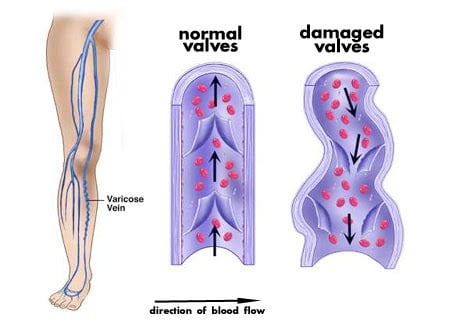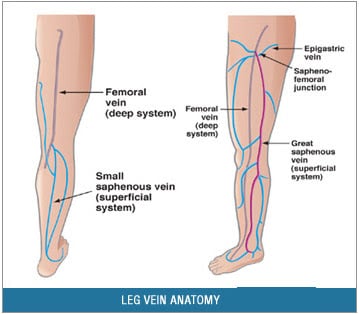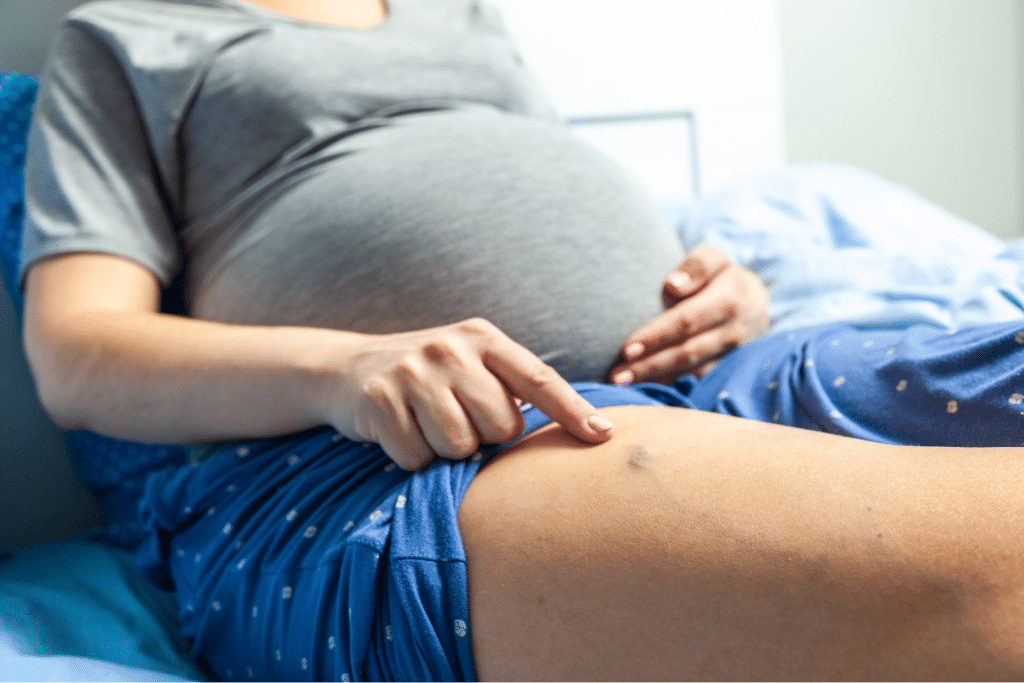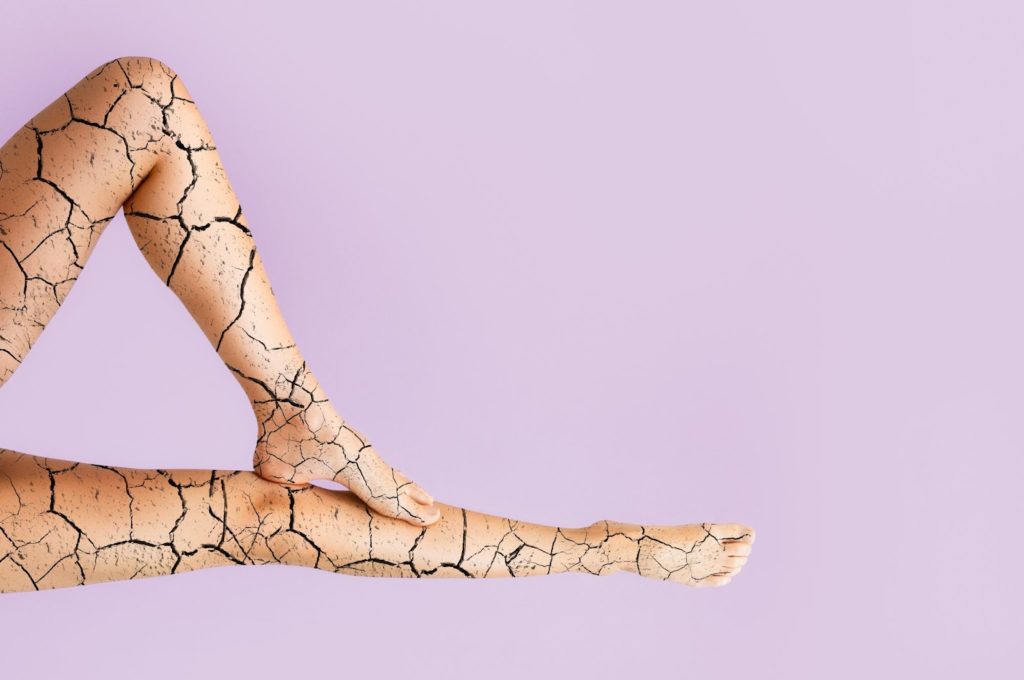When it comes to healthy blood flow and circulation throughout the body, veins play a vital role in moving blood back and forth between the heart. A healthy circulatory system provides the entire body with the blood it requires to function properly. In the event that something goes wrong within the greater network of veins, there are a number of signs and symptoms that point to the underlying condition. When these issues continue over the long-term for a patient it is referred to as a chronic venous disease.
It is estimated that over 200,000 new cases of chronic venous disease are diagnosed in the United State each year making it a fairly common disorder to develop. While there is no single cure for chronic venous insufficiency, recognizing the symptoms of this condition early on makes it much easier for physicians to evaluate, diagnose, and treat patients. Furthermore, early diagnosis provides a path to a comprehensive and personalized plan of action that takes the severity of a patient’s chronic venous disease into account from the very start. Managing the disease is imperative for those patients looking to maintain a high quality of life for years to come.
Normal vs. Damaged Veins

While keeping a close eye on overall health is essential to many individuals, vein health, and how it can be linked to other conditions is easily and often overlooked. Below the surface of the skin, veins and arteries play a vital role in keeping the human body on a healthy and thriving track. Together, arteries and veins are in charge of moving blood successfully between the beating heart and the rest of the body. Where arteries carry oxygen-rich blood away from the heart, veins are responsible for carrying oxygen-depleted blood from the extremities back to the heart for property replenishing and recirculation.

In order to get blood back to the heart against the constant pull of gravity, veins are specially designed with a series of one-way valves to keep blood going the right direction. In the event that one or more of these valves isn’t working properly, blood quickly begins to flow the opposite direction and it doesn’t take long for pooling to begin in the extremities. As blood pools in the legs or other extremities, pressure builds which can ultimately lead to painful swelling, skin discoloration, and even pain to the touch. Many physicians point to these underlying vein conditions when it comes to the development of varicose veins, spider veins as well as the potential risk for developing more serious deep vein thrombosis which may ultimately lead to a fatal pulmonary embolism.

Signs and Symptoms Associated with Chronic Venous Insufficiency
In healthy veins, blood moves seamlessly between the heart and the rest of the body thanks to a collection of valves that keep blood flowing in the right direction at all times. When these valves become faulty, blood is suddenly able to flow in the wrong direction and naturally, following gravity, will often begin to pool in a patient’s extremities. Physicians often point to this form of venous insufficiency as the primary cause behind the development of varicose veins. As the veins become dilated with the strain of blood pooling, they begin to bulge and can become visible at the surface in shades of purple and blue.
While varicose veins are easy to identify by their visible size and color, there are a variety of other symptoms that are associated with venous insufficiency as well. Some patients with venous insufficiency may experience extreme swelling, discoloration of the skin, skin ulcers, areas around veins that are warm to the touch, or even itchy, painful, and sore. Those who experience skin ulcers as a symptom of venous insufficiency are generally patients suffering from advanced stages of the condition and should always make seeing a physician a top priority. While it’s generally agreed that many of the chronic symptoms of venous insufficiency are noted in patients 40 years of age and beyond, the condition isn’t exclusive to this age group. Patients much younger than 40 are often diagnosed with the condition when they have a family history of venous insufficiency to their name.
Potential Causes for Vein Disease
While it may be an umbrella term, vein disease can refer to a variety of vein conditions and insufficiencies that have the potential to cause painful symptoms or more dangerous conditions for individuals down the road. Blood circulation is an essential bodily function for maintaining overall health and keeping a close eye on vein health is a primary step in staying ahead of the potential for developing more complicated scenarios down the line. Physicians today can point to a variety of reasons that individuals may begin experiencing symptoms related to vein disease. While some individuals are prone to developing venous insufficiencies due to genetic predisposition and family history, others may find that their conditions are related to lifestyle choices or other ailments that are linked.

Circulatory issues can arise when blood flow is restricted due to extended periods of time spent sitting. Whether this happens due to a sit-down job or extensive time traveling on a plane, the less muscle contraction that occurs regularly, the higher the risk for developing circulatory issues related to veins and potentially deep vein thrombosis in the future. Obesity is another potential factor in developing vein disease as added weight puts added pressure on the veins as they work hard to move blood throughout the body. Some individuals suffering from conditions such as heart failure or inflammatory bowel syndrome may also be at an increased risk for vein disease overall as blood flow is hindered or veins are irritated internally. Venous insufficiencies such as varicose veins or spider veins are often correlated with age as well as hormonal fluctuations that occur during pregnancy or menopause.
Diagnosing Vein Disease
Because there are so many potential factors at play for developing vein disease, turning to a professional is the most vigilant step a person can take in maintaining vein health. Diagnosing an existing or potential condition often begins with ultrasound mapping for those that partner with Dr. Wright and his team at the St. Louis Laser Vein Center. This non-invasive procedure provides Dr. Wright with a clear look at an individual’s personal vein network with an opportunity to pinpoint problematic areas or those that might cause issues in the future. From here, a customized treatment plan can be put into place. Treatment options for vein diseases of many types are not only safe and effective at the Laser Vein Center but customized to fit patient preferences. Steering away from the painful vein stripping of the past, the Laser Vein Center is proud to offer outpatient treatment services that focus on cutting-edge laser technologies with quick recovery times. From radiofrequency laser vein ablation to more traditional custom compression garments, our team is able to tailor-fit solutions to align with each patient’s primary vein health needs.
Treating Chronic Venous Disease
Chronic venous disease presents in a variety of stages in patients and therefore, requires a treatment plan that is customized to the individual. While in the past it was often assumed that highly invasive treatment techniques such as vein stripping were the only way to successfully handle chronic venous disease, today, advancements in the field of medicine and cosmetic treatment options provide patients with a wide variety of minimally-invasive choices. These outpatient treatment options eliminate the need for lengthy surgeries that are accompanied by plenty of risks associated with the use of general anesthesia. Instead, patients find they have the option of utilizing local anesthetic and enjoying treatments that come with short and relatively painless recovery periods.
Those patients who are suffering from mild cases of chronic venous disease will likely find wearing compression garments regularly to be highly successful. From socks to sleeves, these compression garments work to promote healthy blood flow in the extremities and when combined with lifestyle changes such as diet and exercise, can prove to be highly effective.
Those patients suffering from more severe cases of chronic venous disease may need to consider minimally invasive treatment options such as laser ablation or sclerotherapy. These treatments are often performed over a series of sessions and involve collapsing problematic veins using injections or laser-focused heat.
Vein Treatment Cost Considerations
It may be surprising to patients that in many cases, the cost of care for chronic venous disease may be covered by their insurance provider. Unlike cosmetic treatment options for conditions such as spider veins, chronic venous disease can have long-term medical impacts on an individual and treatment may be the best way to maintain a high quality of life later on. In light of this, it’s important for prospective patients to make sure to check with their insurance provider prior to undergoing treatment for chronic venous disease to see what might be covered. As with any medical treatment, the final cost will depend not only on the severity of the case being treated but the number of sessions required to achieve successful results.
Contact St. Louis Laser Veins Today
When you’re considering the many benefits of treatment options for vein disease or venous insufficiencies or are perhaps looking to establish care for preventative vein health, Dr. Wright and his team are ready and waiting to partner with you. Contact our team today to learn more about our many services available and to schedule your complimentary initial consultation. This important time is set aside for Dr. Wright to get to know each patient’s individual story and to begin putting together a plan for keeping vein health based on a health profile and patient preferences. From varicose veins to spider veins and the many potential conditions in between, Dr. Wright brings vast experience into the world of vein health and a passion for creating a safe and effective place for patients to find the care they need.

